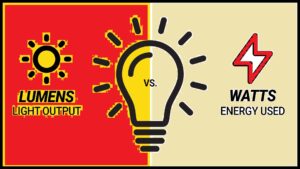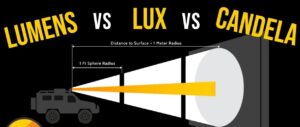Hi friends, welcome to the new post. Here, we will learn How Bright is 1000 Lumens. 2023 Lumens Brightness Guide. Lighting is important in our lives and glows our homes and offices to ensure safety on the road. In some conditions, we think how bright is 1000 lumens?” In this post, we will discuss the details of the lumen and its importance in getting different parameters. So let’s get started with How Bright is 1000 Lumens
Understanding Lumens

The lumen is a luminous flux unit, which is a measurement of visible light of a light source in unit time. In this method, we find how much light source is bright. High-lumen output is a bright light source. Lumerns aer international system that denied as lm. 1 lumen is light of point source of one candela in a solid angle of one steradian.
Human eyes are sensitive to light wavelength. Lumen quantity of light output based on the model of the human eye. This feature is called the luminosity function.
When we buy light bulbs, it is good to know the lumen output in watts. Wattage is the power a light bulb uses,, and the lumen is the light output calculation. Light bulbs having high lumen output offer larger brightness and also have high power use
Read more:How Many Lumens Is A 100 Watt Bulb?
The Lumen output of differnt light bulbs is explained here
| Type of light bulb | Lumen output |
|---|---|
| Incandescent light bulb | 40 to100 lumens per watt |
| Fluorescent light bulb | 50 to 100 lumens per watt |
| LED light bulb | 80 to 150 lumens per watt |
The Brightness of a 1000 Lumen Flashlight
The 1000-lumen flashlight is highly bright. Its brightness is equal to 1000 candles. It produces beams of light that reach a distance of 200 meters or roe according to the lens or reflector design. A flashlight helps to see differnt objects from larger distances, so it is good for outdoor uses like hiking and camping lights.
How to choose to choose a 1000-lumen flashlight:
- Bemas pattern is a factor in selecting 1000-lumen flashlights. The beam pattern measures how light is distributed. There are three main beam patterns: spot, flood, and hybrid. Flood beams produce wide beams of light used for illumination. Spot bemas produce narrow, concentrated light that helps to see long-distance objects. Hybrid bemas are a mixture of flood and spot beams.
- Some 100-lumen flashlight has a zero function to set the beam pattern. It is good for conditions where we focus on differnt objects.
- This flashlight’s operating life can differnt according to type and brightness settings.
- it can be durable to use in outdoor applications
What’s the Difference Between Lumens and Watts?

These two are differnt units for explaining light bulbs. Lumen is a measurement of the visible light of a light source, and watt is the power used by the light source.
- Lumen is a unit of luminous flux that calculates the power generated by the source. Such as 60 watt incandescent bulb produces 800 lumen and 500 lumen LED uses ten watt
- Watt is the rate of energy used or converted. Larger water explains larger power used. As 60-watt incandescent bulb uses 60 watts of curent, and 500 lumen LED uses a ten watt
What’s the Difference Between Lumens and Candela?
| Feature | Lumens | Candela |
|---|---|---|
| Definition | The total amount of light released by a lighting apparatus | The light released by a lighting device in a particular direction |
| Symbol | L | cd |
| Measurement | Area | Focused beam |
| Application | Illuminating objects in an area | Shining directly on objects |
| Example | Incandescent or fluorescent light bulb | Pencil torch |
Lumens vs Candela vs flux
| Property | Lumens | Candela | Flux |
|---|---|---|---|
| Definition | Light released by a light source in the visible range | Light released by the source in a certain direction | Light emitted by light source |
| Unit | lm (lumen) | cd (candela) | lm/sr (lumen per steradian) |
| Relationship | 1 candela is 1 lumen per steradian | 1 lumen = 4π candela | 1 lumen = 4π flux |
| Application | Measure the brightness of a light source, lightbulb, or a flashlight | intensity of a light source measured spotlight or a headlight | amount of light energy released by a light source, like a light bulb or a laser |
Factors to consider when choosing a flashlight
- Flashlights operate on differnt battery types like alkaline, lithium-ion, and NiMH. Battery will affect weight and cost of light also length of time operate on single charge.
- If there flashlight has to be used in wet conditions use water resistant. Flashlights are rated for water resistance for IP code. An IP67 flashlight is dustproof and submerged in water about 1 meter for 30 minutes.
- Flashlght made with differnt materials like plastic, aluminum, and metal. Material affects the flashlight and durability.
- Flashlights can have different price values so buy according to the use
Lumen Rating and Application
The lumen rating of the flashlight measured its brightness. The flashlight having a high lumen rating will be brighter than the flashlight with and low lumen rating. But lumens are not a factor that defines the brightness of a flashlight. The beam pattern of the flashlight is important since a focused beam will glow in certain areas than a flashlight with a larger beam
| Usage | Lumens |
|---|---|
| General-purpose | 1000 to 2000 |
| Search and rescue | 3000 to 5000 |
| Hunting | 5000 to 10000 |
| Camping | 500 to 1000 |
| Hiking | 300 to 500 |
| Self-defense | 1000 to 2000 |
How To Determine The Number Of Lumens You Will Need?
For finding lumens needed there is a need for multiple rooms in square footage according to candle needs. Such as 100 square foot room, needed ten to twenty-foot candles, that needed 1000 to 2000 lumens. The 100 square foot dining room that required thirty to 40 candles needed 3000 to 4000 lumens
How Much Light Are 1500 Lumens?
1500 lumens is a calculation of light output such as for flashlight brightness. 1500 lumens is a very high brightness and normally we can see very dark nights. So it is mostly used in hiking and camping
1500 lumen rated flashlight also glows objects about 256 ft distance clearly. 1500 lumens are equal to 100 to 125 watts for incandescent light, 18 to 30 watts for CFLs, and 12-18 watts for LEDs. That means if you have to get 1500 lumens of brightens use an LED or CFL bulb to get the most band
1000 Lumen vs1500 Lumen vs 300 Lumen LED vs 500 Lumen LED
| Lumen Level | Brightness | uses |
|---|---|---|
| 300 Lumens | Low | Nightlights, closets accent lighting, |
| 500 Lumens | Low-Medium | , task lighting, Table lamps |
| 1000 Lumens | Medium | Desk lamps, reading pendant lights, |
| 1500 Lumens | Medium-High | Room lighting, general illumination |
Faqs
- Is 1000 lumens very bright?
it is very bright like ten 100-watt incandescent light bulbs brightness it provides
- Is 1000 lumens bright enough for a room?
For finding there is a need to multiply room square foot with room foot-candle neds. Like 100 square-foot living room that needed 10 to 20-foot candles, required 1000 to 200 lumens. 100 square foot dining room that needed 20 to 40 foot candles needed 3k to 4k lumens
To determine the needed lumens, you will need to multiply your room square footage by your room foot-candle requirement. For example, a 100 square-foot living room, which needs 10-20 foot-candles, will need 1,000-2,000 lumens. A 100 square-foot dining room, which needs 30-40 foot candles, will need 3,000-4,000 lumens Bedroom needs 1,000 to 2,000 lumens
- Is 1000 lumens bright enough for a work light?
For workshops at home, there need of light with a lumen output of 500-1000
- How bright is 1000 lumens in watts?
| 200 to 300 lumens | 700 to 1000 lumens | |
|---|---|---|
| Incandescent | 25-30 watts | 75 watts |
| Halogen | 18-25 watts | 65 watts |
| CFL | 5-6 watts | 15 watts |
| LED | 2-4 watts | 8-10 watts |
- How many lumens do I need for a bedroom light?
1,000 to 2,000 lumens needed for bedroom light
- How many lumens are in a 40 watt bulb?
450 lumens
- How many lumens per watt is an LED?
Based on the bulb and production company, LED generated 75 to 110 lumens/watt.
- Is 800 lumens too bright?
, LED bulbs with lumen ratings of between 800 and 1,100 lumens is good. The 60 watt incandescent bulb provdies 800 lumens,
- What is a 60-watt bulb equal to in LED?
A standard 60-watt incandescent light bulb is replaced to an LED light bulb that produces from 800 to 1200 lumens. The accurate value lumens will based onLED bulb







